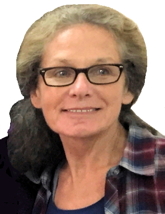
|
Folk Dance Federation of California, South, Inc.
Why Visitors Don't Come Back, |
  
|
CLICK AN IMAGE TO ENLARGE
Why Visitors Don't Come Back
By Richard Duree
We all know, or should know, that our aging folk dance community will not survive us without new members. It's been said that the last folk dancer is now a senior citizen – probably true. A famous folk dance teacher even said that he doesn't care what happens to the folk dance community after its gone. He might not, but I do. And so should we all.
But on too many occasions I've seen visitors treated in ways that ensure they will not return. They have been ignored as though they were invisible. They have been arrogantly told to "follow along behind the line." They have even been obviously resented. They have been dragged into what a folk dancer may think of as a "simple" dance, but to a beginner is a confusing and meaningless mix of steps, changes of direction, turns, and leg gestures that guarantee a frustrating and unsuccessful experience. Interesting information about the dance, such as where it comes from, that might intrigue a visitor is never shared. After two or three of those, the most I've ever seen shared with a visitor, it's no wonder they don't return. They have been intimidated, embarrassed, overwhelmed, discouraged, disappointed, and unimpressed.
Perhaps it might be helpful to step into the mind of a visitor to visualize how they might see us and the dance. We don't know what brings someone to our class. They may be seeking a new hobby, perhaps relief from some unseen personal grief, or perhaps it is just their curiosity. Whatever the motive, the visitor is seeking a successful and satisfying experience. That is true of any new activity, be it dancing or hiking or skiing – whatever.
What the visitor encounters is a group of strangers dancing incomprehensible dances to unfamiliar music that may be intriguing, or a turnoff. Do you remember the first time you heard a zurna or a gaida?
The visitor may be a competent dancer, but most likely not. They may be intellectually interested, or not. Physically talented, or not. Determined or easily discouraged. Shy or outgoing.
It matters not; that person is the potential future of the folk dance community and has done us the compliment of seeking to join us. It is an insult to everyone to do less than make the effort to keep someone new.
Publicity is our first priority. No one will even know we exist if there is nothing to tell the public that we exist. We need to spend hard money if necessary to advertise clubs, classes, workshops, festivals, and performances. The public is remarkably ignorant of what folk dance is and they always have been. Utilizing the advice and services of professionals might be worth the expense.
Competent teaching is next. Teachers have taught, and dancers have learned, by rote since folk dance was born as a recreation. There was apparently never a thought given to either teaching or dance technique; music and rhythm have remained almost irrelevant. Teaching a beginner is a skill that very few folk dance teachers have. Learning dance by rote is extremely difficult for someone not experienced in the process and I have heard the complaint about teachers as far back as I can remember. This is the major cause of beginner frustration and intimidation.
Forget the idea that the beginner just wants to "have fun." That's a cop-out for not knowing what to do with them. Beginners want to participate, to be included, valued as a new member, develop confidence, experience success, and realize that this could be worth investing some time and effort.
If the prevailing attitude does not adjust to incorporating beginners, we will all be gone soon. Will the last folk dancer please turn out the lights?
Another Point of View
By Sandy Helperin
Where to start? I disagree with so much of what Richard Duree has written that I truly don't know where to start. The groups that I dance with make a visitor feel like royalty. We are always so happy to have new faces among our dancers that most everyone greets the newcomers and attempts to help them understand the dances.
As for publicity, some of our groups have been following the lead of Jan Rayman of Pasadena Folk Dancers and have joined Meetup.com. This has worked very nicely for Pasadena, and one reason it has been so successful is that Pasadena makes it easier for inexperienced dancers by adjusting their program to meet the beginner's needs. That is, easier teaching early in the evening with emphasis on dance steps.
Competent teachers? Several of the dancers teaching at the groups I attend, Tuesday Gypsies and Westwood Co-op, make a great effort to give the groups the background of the dances before beginning to teach the dance. Gerda Ben-Zeev will tell the name of the teacher, the history of the dance, the story of the dance, and the rhythm of the dance. When Asako Oshiro teaches a complicated dance, somehow, with her marvelous ability to break down the steps and teach them so thoroughly, most everyone ends up doing the dance. Marc Rayman has taught the Tuesday Gypsys a couple of very interesting dances and he teaches styling, background, and makes the learning fun with his wonderful sense of humor.
From my point of view, one of the main reasons we are not getting more dancers is that we no longer have beginners classes like we used to. Both Dave Slater and Beverly Barr used to teach specifically to beginners then (twenty or more years ago), and the beginners classes were taught just before the main teaching. The beginners could stay and see the harder dances and join in when they were ready. In those long ago days, however, the established dancers were not always so welcoming. This has really changed for the better.
The other reason that younger beginners (anyone younger than a senior citizen) don't usually stay is because everyone dancing is a senior citizen. In many churches and temples young people are learning the dances of their cultures. Valerie Daley is teaching youngsters at school in Ventura and I think that these are the things that will perhaps bring back a vibrant folk dance community in the future.
Other Comments
By Jan Rayman
The two entries in last month's Folk Dance Scene, one by Richard Duree and another by Sandy Helperin, seem to be more in agreement than in conflict. Richard mentions many of the things people do that drive people away and Sandy talks about all the good things people do to try to retain new dancers. Sadly, even when a group does all the right things, only a small fraction of the new people come back. Those people need to be nurtured and treasured.
The articles made me think about the advantages and disadvantages of aggressively recruiting and accommodating new people. Besides all the work involved with publicity, changing teaching schedules, and even dance programs, I see another issue: It can be wonderful to dance each week with people you have known for years, even decades. A kind of profound intimacy develops among long-time members. Sometimes I look across the circle at an old friend, catch her eye, and think of all the life experiences (good and bad) we have had and at least shared in part. That is such a great feeling. Even if you don't like some of the quirks of certain people, you know those quirks and, most likely, have learned to deal with them.
When we get a little wave of new people, our intimacy is diluted. Also, I think the new people sometimes sense that they are new people among old friends, even when we make every effort to be friendly to them. But if folk dancing is going to survive, having new people, with all the benefits and disadvantages, is necessary.
Used with permission of the authors.